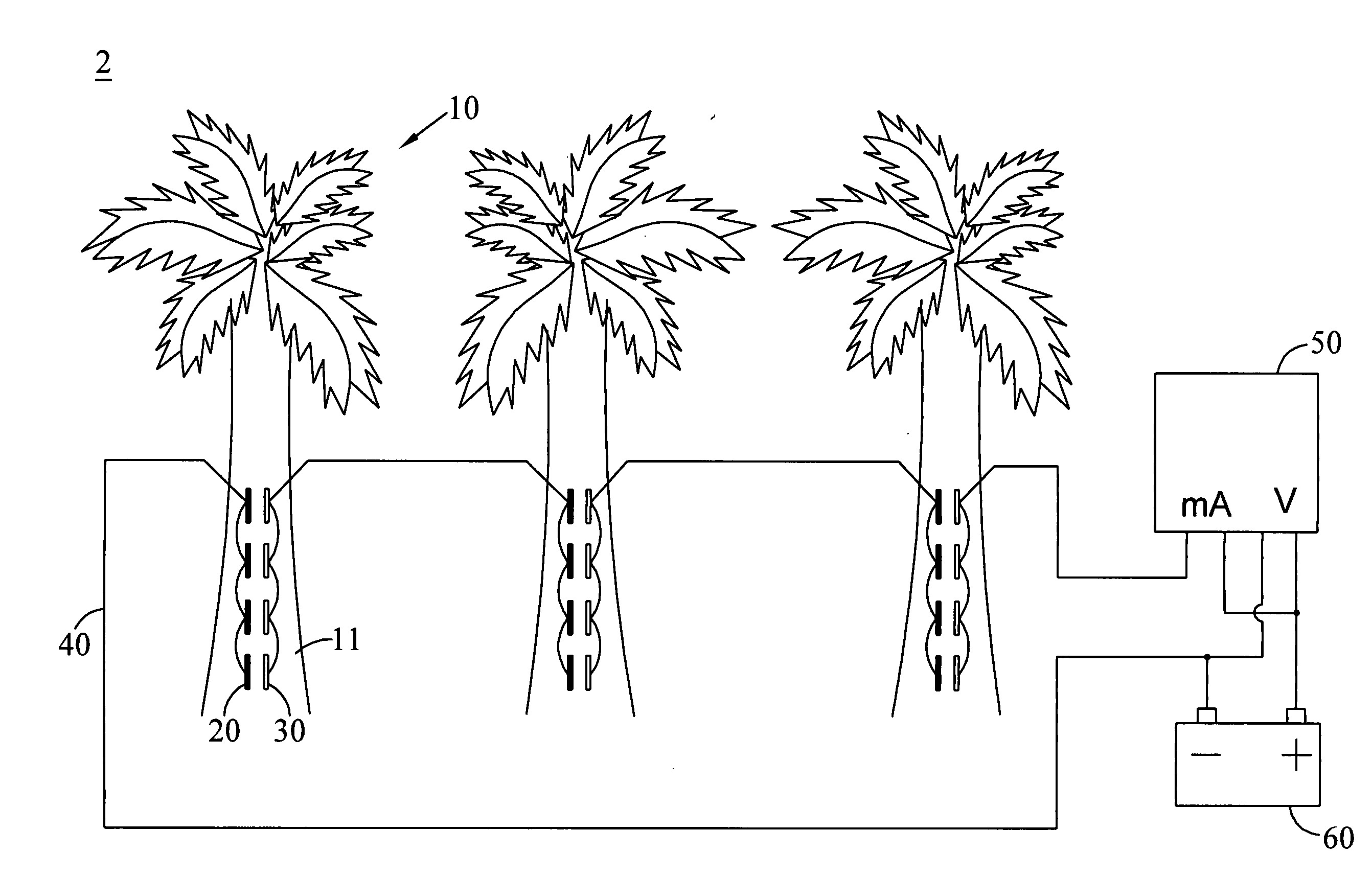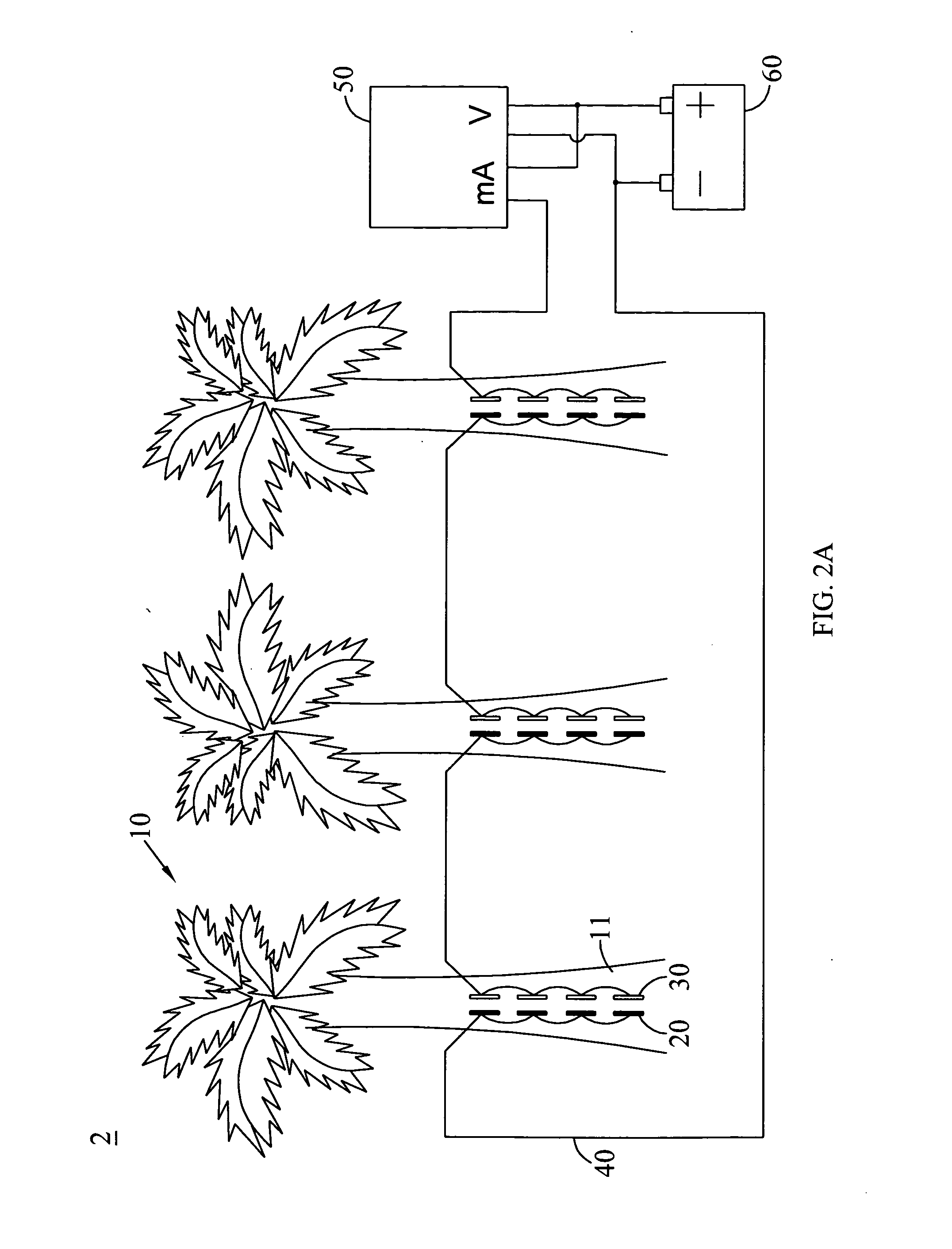Banana plant cell
- Summary
- Abstract
- Description
- Claims
- Application Information
AI Technical Summary
Benefits of technology
Problems solved by technology
Method used
Image
Examples
example 1
[0029]In this embodiment, zinc is selected as the first electrode, and copper is selected as the second electrode. One copper electrode (2.0 mm*60 mm) and one zinc electrode (2.0 mm*60 mm) are inserted on the pseudostem of the same one banana plant, and are connected electrically to each other, in which 1.001 V of direct voltage can be measured so as to confirm that the banana plant cell according to the present invention can definitely generate electricity.
example 2
Gold-Zinc Electrodes
[0030]In this embodiment, zinc is selected as the first electrode, and gold is selected as the second electrode. One gold coin (14 mm of diameter) and two zinc electrodes (1.6 mm*51 mm) are inserted longitudinally on the pseudostem of the banana plant (about 6-8 months) with about 12 mm of depth, and are connected electrically to each other, wherein the two zinc electrodes are linked in parallel. The banana plant is further connected with a voltage and current recorder and a load having 2.3 ohm of load resistance via a conducting wire. Because the difference in ionization tendency between gold and zinc is larger than that between copper and zinc, the outputted voltage should be higher. The constructed banana plant cell in this embodiment can be measured with 1.234 V of direct voltage and 0.12 mA of current so as to confirm that the banana plant can be definitely applied to generating electricity and be used as a battery or a source of power supply.
example 3
Silver-Zinc Electrodes
[0031]Zinc is selected as the first electrode, and silver is selected as the second electrode in this embodiment. One silver coin (41 mm of diameter) and four zinc electrodes (1.6 mm*51 mm) are inserted longitudinally on the pseudostem of the banana plant (about 6-8 months) with about 40 mm of depth, and are connected electrically to each other, wherein the four zinc electrodes are linked in parallel. The banana plant is further connected with a voltage and current recorder and a load having 2.3 ohm of load resistance via a conducting wire. Compared to the difference in ionization tendency between copper and zinc, the difference in ionization tendency between silver and zinc is larger, and thus the outputted voltage should be higher. As a result, the banana plant cell in this embodiment is actually measured with 1.259 V of direct voltage and 1.17 mA of current, confirming that the banana plant is definitely able to generate electricity and to use as a battery o...
PUM
 Login to View More
Login to View More Abstract
Description
Claims
Application Information
 Login to View More
Login to View More - R&D
- Intellectual Property
- Life Sciences
- Materials
- Tech Scout
- Unparalleled Data Quality
- Higher Quality Content
- 60% Fewer Hallucinations
Browse by: Latest US Patents, China's latest patents, Technical Efficacy Thesaurus, Application Domain, Technology Topic, Popular Technical Reports.
© 2025 PatSnap. All rights reserved.Legal|Privacy policy|Modern Slavery Act Transparency Statement|Sitemap|About US| Contact US: help@patsnap.com



